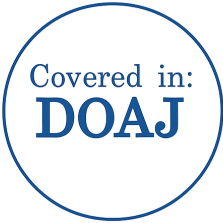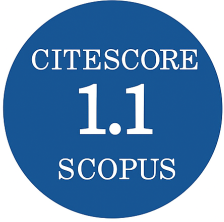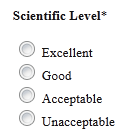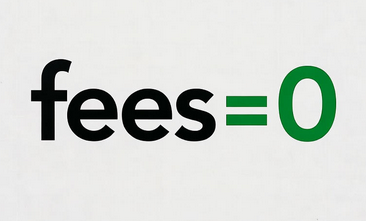 |
 |
The editorial board designates three referees - experts in the scientific branch of the contribution. If the referee who has been addressed does not feel competent in the area of the article or if there are any other reasons that do not allow him to write the review, he rejects writing it and notifies the editor about it. Common deadlines for reviewing are:
Referees are asked to evaluate an article according to the following instructions using the online editorial system. Referees are not expected to correct or copyedit manuscripts. Language correction is not a part of the peer review process.
In the first part of review please evaluate the article using the four criteria. Scientific level of article means the quality of new facts in the article, as well as the measure of their contribution for the relevant scientific branch. In this part, you will also examine how these new facts are presented and documented in article. Another aspect to be considered is how the article matches the generally accepted attributes of article, including articulation of article, balance of its parts and correctness of conclusions. Next criteria are Intelligibility of the article, its Topicality and Stylistic level. Please, fill up the interactive questionnaire and evaluate the article in terms of these main four quality criteria. Evaluation should be done by selection of an appropriate option in the interactive questionnaire (see the example).

The quality to be assessed in this part is if the topic of submitted contribution falls with the scientific area of military, defence and security technologies and equipment and if the article is acceptable for publishing in journal of AiMT (see Aim and Scope). Evaluation should be done by selection of an appropriate option in the interactive questionnaire.
This item is aimed at assessing the nature of the article and its classification in the relevant article category. AiMT accepts submissions of the following article types (see: AiMT Editorial Policies):
This point is focused on the originality of the article - in other words, you will expresses your opinion on whether the article presents new facts extending the knowledge in the given scientific branch, whether such results have not been published yet by this author or other authors in other periodicals or books. Additionally, you might like to mention other sources dealing with this theme that have not been quoted by the author.
In general, the extent of contribution is proportional to the relevance of its content. Recommended number of pages is 16 at maximum.
The title of the article should correspond to its content. If it does not fully correspond to it, you might suggest/recommend its modification.
Abstracts and keywords are very important for readers' orientation. Please, study them carefully and if they are not in full accordance with the content of the article recommend a change/modification.
In this point, you have an opportunity to assess if the author has properly followed the Instructions for Authors.
The level of formal elaboration is assessed here (see Instructions for Authors). You should focus your attention on the quality of the text and graphic elaboration, correctness of description of equation, figures, graphs, tables, etc. If it is possible, you can also evaluate the language level of the article. The important attribute of the article is the way of using and notation of references in sense of the standard of ISO 690.
Please, state clearly what parts or elements of the article (values, figures, graphs, etc.) are to be corrected. The place for your possible remarks and recommendations is at the end of the interactive questionnaire.
The obligatory part of the review is the clear statement that the contribution is
Should you have any factual objections, remarks and/or recommendations for article correction, please write them and indicate if the correction is necessary (N) or recommended (R).
![]()

